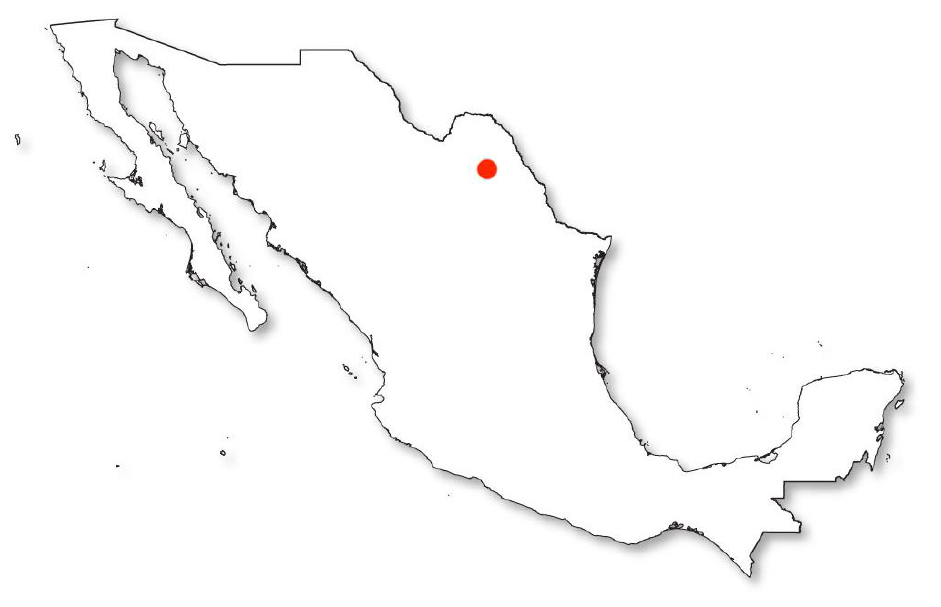La Cascada, Melchor Múzquiz

La Cascada, Melchor Múzquiz, Coahuila, Mexico
Other names: Múzquiz
Nearest town: Santa Rosa de Melchor Múzquiz
GPS coordinates: 27.863466, -101.529905
Altitude: 505 m
Habitat description: semi-natural swimming pool in municipal recreational park; clear water coming from pipes; moderate flow; pebbles on the ground with little leaf litter and debris, concrete and stone walls with some brown algae growth and roots of riparian vegetation, no submerged aquatic vegetation; lots of fish (winter period); this place is crowded with people during summer
Surroundings: recreational park at the border of the city, a quiet part of with hotels, museums, schools, surrounded by sparse buildings; there is an open area just next to the park which continues towards the mountains with mining activity
Threats: during period of prolonged droughts, the spring (source of the water coming through the pipes here, located 4 km away – see report for El Socavón /not published yet/) gets dry; these episodes are more frequent and last longer in recent years and cause alarming situation in the city of Múzquiz, because the spring is used for households and agriculture
Xiphophorus species: Xiphophorus meyeri (extinct since 1997 according to the IUCN)
Other fish: Gambusia speciosa, Herichthys cyanoguttatus, Astyanax mexicanus, unidentified minnow (Leuciscidae) (all native); Schartl & Schröder (1988) also report Poecilia mexicana and a catfish, but no Astyanax
Other animals: Melanoides tuberculata (introduced)
Plants: none (roots of trees)
Recorded water parameters:
- pH 7,5, 19 °dGH, 25 °C (1988, Schartl & Schröder)
- pH 7,35, 565 μS/cm, temperature 16,5-22 °C (mixing of different sources); air temperature at 12:30 was 20°C (12.2.2018, Balnar & Rejlková)
Visits to the biotope:
- …
- Balnar & Rejlková (2018)
References:
- Schartl, M. & J. H. Schröder. 1988. A new species of the genus Xiphophorus Heckel 1848, endemic to northern Coahuila, Mexico (Pisces: Poeciliidae). Senckenbergiana biologica 68(4/6): 311-321. (Original description of the species with information and photos of the habitat in the 80’s where the area was more natural with trees above the ponds. Authors also mention “muddy loam” at the bottom of the ponds and “large colonies of water plants are found in the bank regions, which is the preferred habitat of the new fish.” Available online here.)
Gallery:
Under construction
We are working on the content of this website. Your help will be appreciated, please contact us at info@xipho.org.
If you want to be informed about the progress and plans of the Xiphophorus working group, subscribe to our mailing list or follow us on Facebook:









